|
|
Raimondo de Sangro,
the “Sorcerer” Prince
(Il Giornale, Published on Friday, October 18, 1996)
Naples (Italy)
From our reporter
Rino Di Stefano
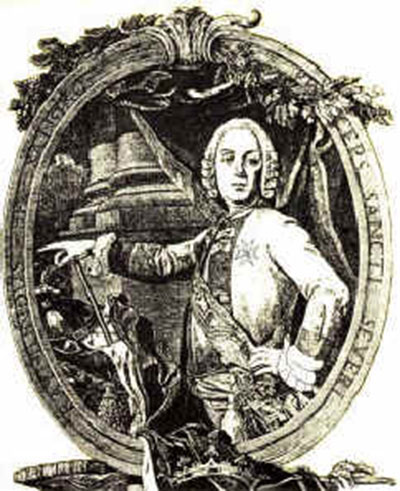 Even
today, two hundred years after his demise, there are still some Neapolitans
who furtively cross themselves when his name is spoken. It certainly can't
be denied that Raimondo de Sangro, Prince of San Severo, has left a rather tarnished
image of himself in the eyes of posterity. Some people claim that he was some
sort of a sorcerer, a diabolical alchemist who ordered people to be kidnapped
so he could perform heinous experiments on their bodies, a godless predator
of young boys who he later castrated. No power on Earth, not even the King's
power was able to rein him in. There were even those who said that he ordered
the killing of seven cardinals and then made the same number of chairs out of
their bones and skin. Fear and loathing of the Prince were not confined to the
lower classes, the upper classes held him in the lowest esteem as well. The
Prince had in fact risen to the position of first Grand Master of the Neapolitan
Free Masons and it so happened that one day, in order to save his head and property,
he did not hesitate to betray his Mason "brothers", the best and
the brightest among the Neapolitan nobility, by reporting their names to the
king. The name of Raimondo de Sangro ended up being cursed in all European Mason
lodges and, in some cases he was even publicly burned in effigy. In short, he
was the first Mason in Italian history to turn State evidence, and that surely
did not earn him any brownie points.
Even
today, two hundred years after his demise, there are still some Neapolitans
who furtively cross themselves when his name is spoken. It certainly can't
be denied that Raimondo de Sangro, Prince of San Severo, has left a rather tarnished
image of himself in the eyes of posterity. Some people claim that he was some
sort of a sorcerer, a diabolical alchemist who ordered people to be kidnapped
so he could perform heinous experiments on their bodies, a godless predator
of young boys who he later castrated. No power on Earth, not even the King's
power was able to rein him in. There were even those who said that he ordered
the killing of seven cardinals and then made the same number of chairs out of
their bones and skin. Fear and loathing of the Prince were not confined to the
lower classes, the upper classes held him in the lowest esteem as well. The
Prince had in fact risen to the position of first Grand Master of the Neapolitan
Free Masons and it so happened that one day, in order to save his head and property,
he did not hesitate to betray his Mason "brothers", the best and
the brightest among the Neapolitan nobility, by reporting their names to the
king. The name of Raimondo de Sangro ended up being cursed in all European Mason
lodges and, in some cases he was even publicly burned in effigy. In short, he
was the first Mason in Italian history to turn State evidence, and that surely
did not earn him any brownie points.
The prestigious Italian encyclopedia Treccani, while acknowledging his great
notoriety both in Italy and abroad, raises doubts about his undeniable scientific
merits (he even belonged to the Accademia della Crusca, the most important Academy
of the literary world in Italy) and states: " … he invented or believed
that he had invented new types of firearms, innumerable new types of fireworks,
fabrics, techniques for coloring marble and glass, new mechanical applications,
etc." 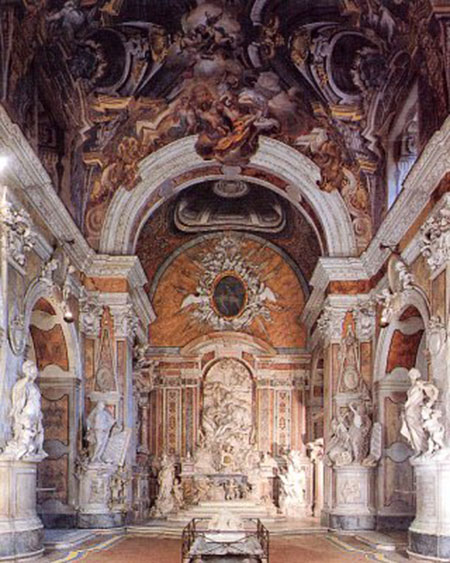 Yet,
if you dig a little deeper underneath the popular prejudice created around his
figure, quite a different reality begins to emerge. And that is, that not only
was the Prince of San Severo one of the most mysterious and controversial characters
of the European 18th Century, but he was also one of the most brilliant minds
of his times. And because of this he paid the price that fate had in store for
him.
Yet,
if you dig a little deeper underneath the popular prejudice created around his
figure, quite a different reality begins to emerge. And that is, that not only
was the Prince of San Severo one of the most mysterious and controversial characters
of the European 18th Century, but he was also one of the most brilliant minds
of his times. And because of this he paid the price that fate had in store for
him.
Let's take a closer look at this Neapolitan nobleman and see what his
legacy truly is. Just for starters, his family was not of Neapolitan descent.
He was a direct descendant of Charlemagne through the Oderisio branch, the Count
of Sangro (1093). His family boasted an incredibly long list of titles, besides
that of Prince of San Severo: he was the Prince of Castelfranco, of Fondi, Duke
of Torremaggiore, Duke of Martina, and so on. Among other things, the Sangros
were Peers of Spain. It was precisely in one of these estates, in Torremaggiore
in the region of Apulia, that Raimondo was born on January 30, 1710, the third
of three brothers, his parents being don Antonio de Sangro and Cecilia Caetani
of Aragon. His mother died when he was one year old, and his two brothers died
at a young age as well. Thus, at the young age of 16 Raimondo inherited the
title of Prince of San Severo. In despair over his wifès death, his father
refused to take care of the baby and before locking himself up in a monastery
to the end of his days, he entrusted the young boy to the care of his grandfather.
Because of his very lively intellect, by the age of ten Raimondo was sent to
a Jesuit seminary in Rome. At the age of 20, having acquired a scholarly background
that was much greater than that of his noble peers, Raimondo was able to return
ho his family palace in Naples, using the title Prince of San Severo. In his
"Autobiography", Antonio Genovesi, a well known Italian Enlightenment
historian, describes him in the following manner: "He is short, with a
big head, of pleasing and youthful appearance, a witty philosopher, greatly
devoted to the mechanical sciences, he is very amiable and sweet in manner,
scholarly and retiring, a lover of conversation with literary people. If it
weren't for his flaw of an excess of imagination, which leads him to see
things that are not very likely to exist, he could pass as one of the perfect
philosophers".
His imagination, Genovesi hit the nail over the head. The Prince had an excess
of it, and did not like keeping it at a theoretical level. On the contrary,
he put it into practice and brought to the world all those inventions that made
him famous. One stands out above all others, i.e., the controversial "eternal
light". Don Raimondo made it from a skull, obtaining a mix with a high
concentration of magnesium and phosphate that could burn for hours while consuming
only a negligible amount of material.
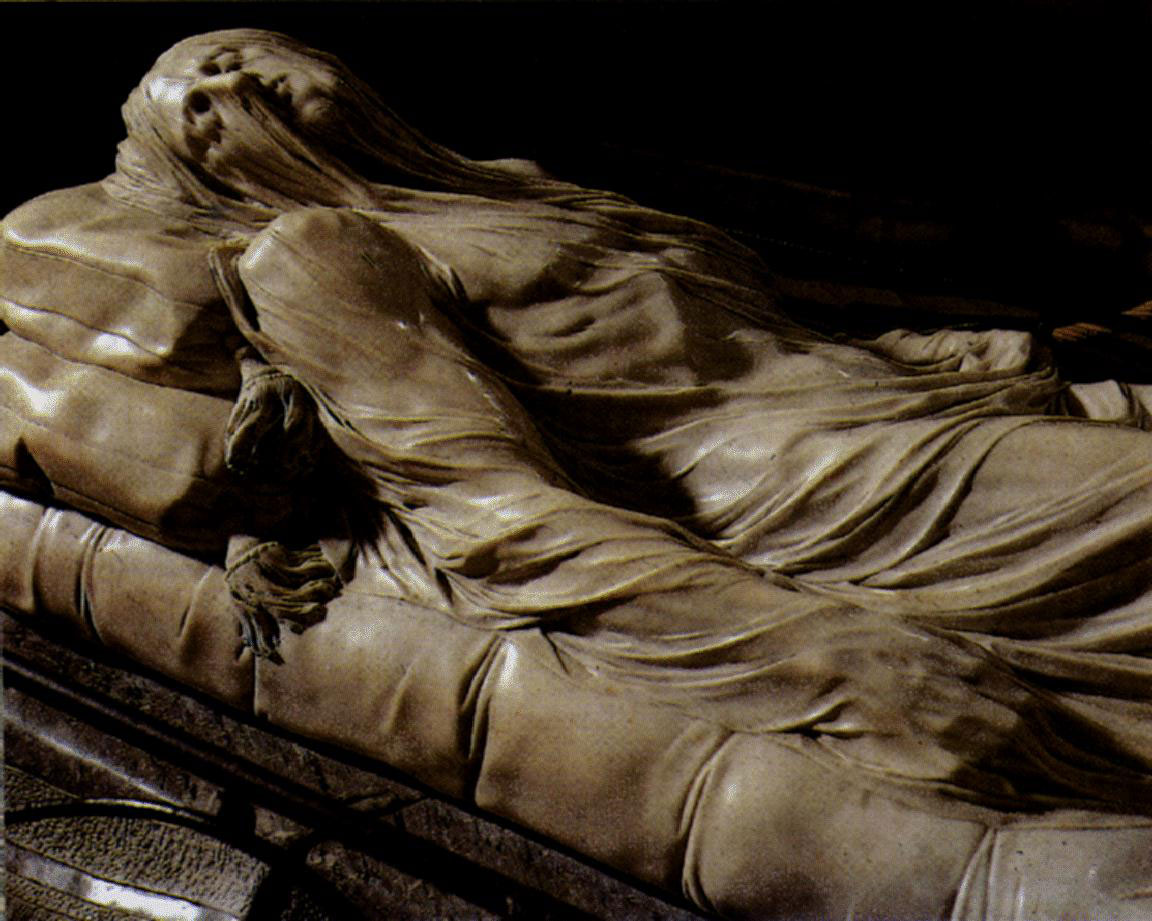 The most illustrious of his admirers was
King Charles III of Bourbon, the son of King Philip V of Spain, who at the tender
age of 17, after defeating the Austro-Hungaric Empire, made his triumphal entrance
in Naples to take possession of the city, as the capital of the Kingdom of the
Two Sicilies. Even though he was so young, Charles III understood the importance
of surrounding himself with advisers he could trust to help him become familiar
with this part of his newly conquered kingdom. Thus, right after his wedding
with Amalia Walburga of Poland, he founded the knightly order of San Gennaro
and appointed himself Grand Master. Only 60 noblemen with the bluest blood in
Naples were to belong to this order and were to be personally hand picked by
the King. The Prince of San Severo was one of the first to be called. Don Raimondo
knew that the King loved to hunt. So, to thank him for the honor he had been
granted, he presented him with a waterproof cloak of his invention, waterproofing
of fabric being a process that was unknown at the time. Obviously the King was
very impressed by this most original gift.
The most illustrious of his admirers was
King Charles III of Bourbon, the son of King Philip V of Spain, who at the tender
age of 17, after defeating the Austro-Hungaric Empire, made his triumphal entrance
in Naples to take possession of the city, as the capital of the Kingdom of the
Two Sicilies. Even though he was so young, Charles III understood the importance
of surrounding himself with advisers he could trust to help him become familiar
with this part of his newly conquered kingdom. Thus, right after his wedding
with Amalia Walburga of Poland, he founded the knightly order of San Gennaro
and appointed himself Grand Master. Only 60 noblemen with the bluest blood in
Naples were to belong to this order and were to be personally hand picked by
the King. The Prince of San Severo was one of the first to be called. Don Raimondo
knew that the King loved to hunt. So, to thank him for the honor he had been
granted, he presented him with a waterproof cloak of his invention, waterproofing
of fabric being a process that was unknown at the time. Obviously the King was
very impressed by this most original gift.
His fame grew over the years. In 1744, for example, the Prince, heading his
troops as Colonel of the Capitanata regiment, freed the town of Velletri which
had been occupied by General Lobkowitz's army earning additional praise
from the King. His contributions to the military field included the invention
of a steel alloy cannon (at that time they were still made of bronze) and a
rear loaded shotgun that was made earlier then the one invented by Lefaucheaux.
The Prince mind, however, was to turn in a completely different direction.
In spite of the religious training that he had received with the Jesuits, the
young man soon joined the secret brotherhood of the Rosicrucians, where he was
initiated into ancient alchemic rituals, the so called "sacred art"
or "king's art" which had been handed down through the centuries
from Egyptian priest to their disciples. Don Raimondo had found his life calling.
While maintaining the outmost silence about "his brothers" and the
teachings he was receiving (he left no documents whatsoever on the activities
of the mysterious sect) the Prince radically changed his life and devoted all
his time to alchemy. Vials, ovens and alembics filled the cellar of his palace
and at nighttime it was not rare to see strange, colored vapors and disgusting
smells coming out of the barred windows of his cellar. It was at that time that
Neapolitans started labeling him "a sorcerer".
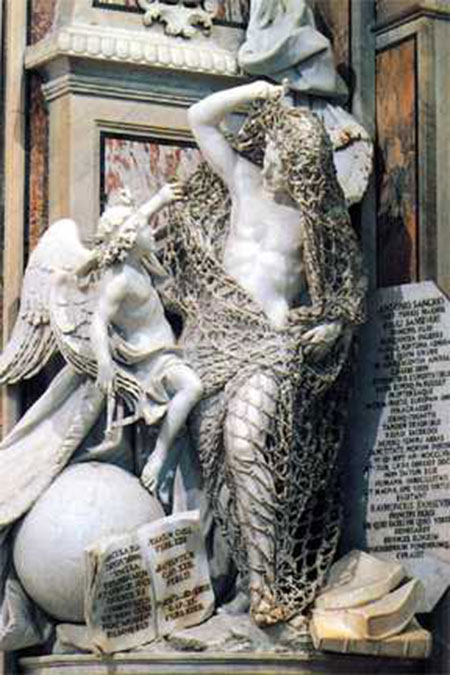 Raimondo de Sangro also had another
hobby, bel canto. In spite of his being acquainted with the pleasures of family
life and having children (he had married Carlotta Caetani of Aragon, a relative
on his mother's side and had five children: Vincenzo, Paolo, Gianfrancesco,
Carlotta and Rosalia), the Prince enjoyed going around his many estates looking
for young boys with beautiful voices. Usually he would find them in the church
choir. Then he would "buy" them from their parents (usually poor, illiterate
peasants who had many children) and had his personal physician, don Giuseppe
Salerno, castrate them. He would then lock them up in the Conservatory of Jesus
Christ's Poor in Naples, where these young castrated boys started their careers
as "sopranist".
Raimondo de Sangro also had another
hobby, bel canto. In spite of his being acquainted with the pleasures of family
life and having children (he had married Carlotta Caetani of Aragon, a relative
on his mother's side and had five children: Vincenzo, Paolo, Gianfrancesco,
Carlotta and Rosalia), the Prince enjoyed going around his many estates looking
for young boys with beautiful voices. Usually he would find them in the church
choir. Then he would "buy" them from their parents (usually poor, illiterate
peasants who had many children) and had his personal physician, don Giuseppe
Salerno, castrate them. He would then lock them up in the Conservatory of Jesus
Christ's Poor in Naples, where these young castrated boys started their careers
as "sopranist".
Most of these unfortunate singers came from the Kingdom of the two Sicilies,
but actually the castrati fad had originated in the Pontifical State where the
Pope had banned women from the stage. This prohibition was not in force in kingdom
of the Bourbon, and in fact many names of female singers have come down to us.
But Neapolitans, and not only them, were crazy for the castrati's voice. The
Prince could be counted among such fans and with an additional element. He saw
in the castrati a search for perfection, which according to the Rosicrucians
resulted from "annulling the dualism that comes from separation, a return to
the primordial androgynous being". But the boys chosen by the Prince actually
paid the price for his unsavory, abstract, philosophical speculation. The fact
that a few of them became rich and famous certainly did not make up for what
they had lost.
Nevertheless, the prince real obsession was with posterity, that is, us. For
years and years he thought about what he could do to astonish us, how he could
be remembered in history as a protagonist. And that is how a masterpiece of
hermetic art, the San Severo Chapel, was born. To find it you have to go to
heart of old Naples. Going around narrow lanes and vicoli you end up in San
Domenico Maggiore Square. There, in front of the obelisk commemorating the thousands
of Neapolitans children who died during outbreaks of the plague, stands the
palace of the Prince of San Severo. Looking down, on the sides of the front
door at number 9, you can still see the bars of the cellar windows which once
served as the Prince laboratory. A few steps ahead, once you turn the corner,
you are in via Francesco De Sanctis, where, at number 17 is the entrance to
the chapel called "the Pietatella" (the little Piety). The things you are about
to see are truly extraordinary, no matter how you consider them. When you first
come in, you feel like you are in a small rectangular Baroque church, teeming
with paintings and decorations. You are surrounded by 18 statues, mostly of
relatives of the Prince, 17 are either at the sides or on your back and one
at the center of the room. At the end, in front of you, is the imposing main
altar.
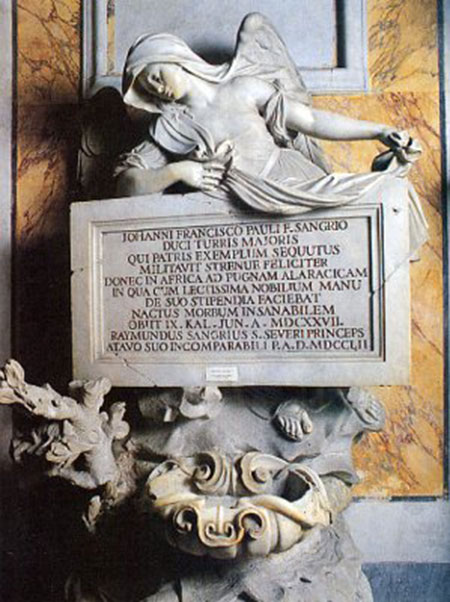 All the statues are very well made and bear the
name of famous sculptors of the time. Three of these statues though are very
special. The first, the one at the center of the chapel, is the so called Veiled
Christ, a work by Giuseppe Sammartino (1720-1793). It shows a dying Christ entirely
covered by a marble veil that becomes one with the statue itself and the bed
on which the statue rests. The incredible thing is that the features of Christ
(his eyes, nose, mouth, the muscles on his arm) can be glimpsed "under" the
veil, i.e., the impression is that the statue was "later" covered with a veil
of marble which became "amalgamated" with the rest of the statue.
All the statues are very well made and bear the
name of famous sculptors of the time. Three of these statues though are very
special. The first, the one at the center of the chapel, is the so called Veiled
Christ, a work by Giuseppe Sammartino (1720-1793). It shows a dying Christ entirely
covered by a marble veil that becomes one with the statue itself and the bed
on which the statue rests. The incredible thing is that the features of Christ
(his eyes, nose, mouth, the muscles on his arm) can be glimpsed "under" the
veil, i.e., the impression is that the statue was "later" covered with a veil
of marble which became "amalgamated" with the rest of the statue.
If you think you're seeing things, move slightly to the right, almost at the
end of the Chapel. Above you, rises the statue of Disinganno (Disillusionment),
a masterpiece by Genoese sculptor Francesco Queirolo (1704-1766). The statue,
representing Antonio de Sangro, Duke of Torremaggiore and father of the Prince,
shows a man who is struggling in a net trying to free himself with the help
of a winged youth. Its allegorical meaning is that man is intent on freeing
himself from the false beliefs (the net) with the aid of the intellect (the
young man). What astonishes the visitor is that the net completely surrounds
a statue that has already been sculpted, while being an integral part of it.
How can that be done?
Continuing the visit, towards the front, on the left, you see the statue of
Pudicizia (Modesty), a work by Antonio Corradini (1668-1752). It shows the Prince
mother, Cecilia Caetani d'Aragona, a rather Junoesque, naked woman covered from
head to toe with a very thin veil of marble which shows her forms in every detail.
According to some, its allegorical meaning is that if you want to possess knowledge
you must lift the veil covering it.
The
issue is: how were these sculptors able to cover their works with veils and
nets made of marble? At this stage there is no answer to this question. But
one can raise some theories. Some of the Prince supporters (don Raimondo has
his admirers even today) claim that the veils were obtained by crystallizing
a base solution of calcium hydrate or slaked 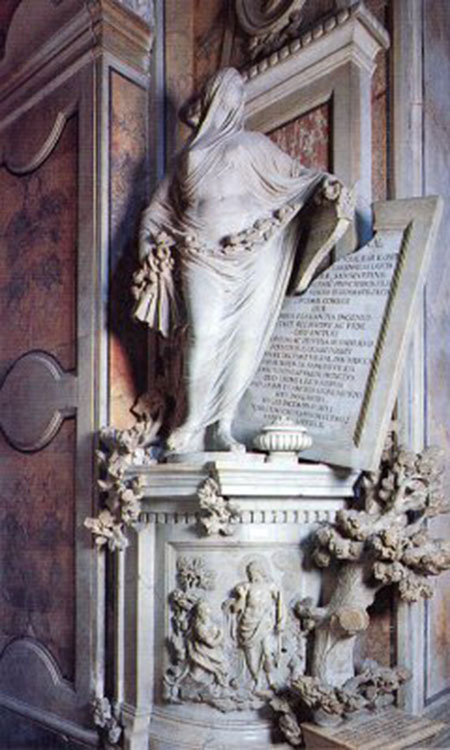 lime). Supposedly this was the
process: the statue was placed in a tub and covered with a wet veil or net,
then a diluted calcium solution was poured over it and finally the liquid was
sprayed with carbon oxide coming from a coal burning oven. This is you could
get calcium carbonate, i.e., marble, which would be joined to the rest of the
statue. As of yet no one has demonstrated this theory to be correct.
lime). Supposedly this was the
process: the statue was placed in a tub and covered with a wet veil or net,
then a diluted calcium solution was poured over it and finally the liquid was
sprayed with carbon oxide coming from a coal burning oven. This is you could
get calcium carbonate, i.e., marble, which would be joined to the rest of the
statue. As of yet no one has demonstrated this theory to be correct.
Another stupefying work of art is the Prince tombstone (you get to it from
the right, crossing under a vaulted ceiling).It is a large marble plate completely
covered with writing in Latin (also written by don Raimondo), the letters are
all in relief. Among other things, one reads: "AN ADMIRABLE MAN, BORN TO DARE
EVERYTHING, Raimondo de Sangro, head of his whole family, Prince of San Severo,
Duke of Torremaggiore… illustrious in mathematical and philosophical sciences,
unsurpassed in investigating the hidden mysteries of nature, well versed and
knowledgeable in military tactics on land, both in treatises and in actual command,
and for this reason deeply appreciated by his King and by Frederick of Prussia….
Following the example of the innate piety handed down to him as a descendent
of Emperor Charlemagne, he restored at his own expense and with his wisdom this
temple…SO THAT HE MAY NOT FALL INTO OBLIVION THROUGH THE AGES". The sarcophagus,
however, does not contain his body; someone stole it who knows when or why.
But the statues are not strong point of the chapel. If you're not too squeamish,
it is worth it to climb down a little spiral staircase which leads you down
to what was once the entryway to his secret laboratory. Here in two glass cases,
over six feet in height are stored the so- called "anatomic machines". A woman's
skeleton has her right arm raised and his eye balls still intact, almost shiny,
in a truly terrified expression. It almost seems like she is begging for help.
Her bones are entirely covered with a very thick arterial and venous system,
which as it became "metalicized" preserved the most important organs as well.
Her heart is whole and you can even see the blood vessels in her mouth. She
was pregnant. In her belly you can see the open placenta from which the umbilical
cord is spilling out and then joining the fetus. Just like his mother's, this
unborn baby's skull can be opened to see the complex network of blood vessels
inside it. The male version of the anatomic machine has more or less the same
features, the only difference being that his arms are not raised but resting
along his trunk. Working with your imagination, you could picture both of them
tied hand and foot to a kind of surgeon's table, but just before dying the woman
was able to free her right arm trying to escape, until her blood circulation
stopped.
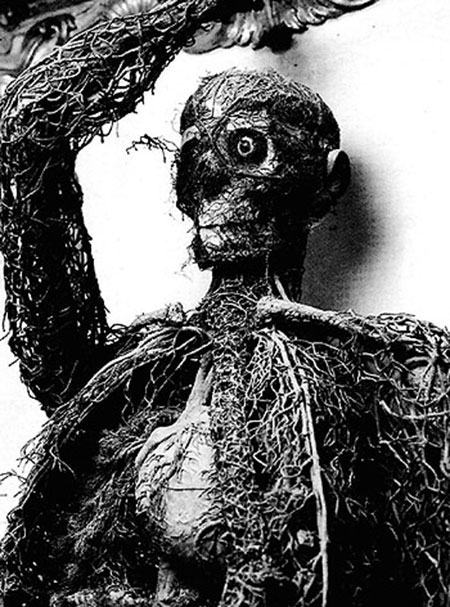 But how were
these "anatomic machines" really made? We don't know. A writing called "A Brief
Note on What Can be Seen in the House of the Prince of San Severo" published
in 1766, and therefore most likely written by the Prince himself, says: "In
the Chapel one can see two Anatomic Machines, that is, skeletons, a male and
a Female, made by injection, which because of their being complete and of their
having undergone such diligent treatment, can be said to be unique in all of
Europe". In light of current medical knowledge, one can theorize that the diabolic
don Raimondo, with the assistance of his private physician Giuseppe Salerno,
injected in the veins of his unfortunate guinea pigs a substance which upon
entering the circulatory system gradually blocked it up to the point of causing
the death of the subject. At that point, the substance might have "metalicized"
the veins and arteries, preserving them from decomposing. In fact, the Prince
must have waited for the skin and flesh to completely decompose before obtaining
what he so pompously calls the "anatomic machines".
But how were
these "anatomic machines" really made? We don't know. A writing called "A Brief
Note on What Can be Seen in the House of the Prince of San Severo" published
in 1766, and therefore most likely written by the Prince himself, says: "In
the Chapel one can see two Anatomic Machines, that is, skeletons, a male and
a Female, made by injection, which because of their being complete and of their
having undergone such diligent treatment, can be said to be unique in all of
Europe". In light of current medical knowledge, one can theorize that the diabolic
don Raimondo, with the assistance of his private physician Giuseppe Salerno,
injected in the veins of his unfortunate guinea pigs a substance which upon
entering the circulatory system gradually blocked it up to the point of causing
the death of the subject. At that point, the substance might have "metalicized"
the veins and arteries, preserving them from decomposing. In fact, the Prince
must have waited for the skin and flesh to completely decompose before obtaining
what he so pompously calls the "anatomic machines".
Doubts still persist about the nature of the machines. In fact the hypodermic
syringe that would have been necessary to make that "injection" was invented
only one hundred years later by a surgeon from Lyon, Carlo Gabriele Pravaz (1791-1853).
And this is precisely the argument made by the Prince supporters who reject
the idea that the man and woman were alive when the horrible experiment was
performed on them. They claim, instead that they are simply skeletons covered
with
an artificial network of blood vessels. A test made on the "machines" in the
50s, however, revealed that: "the whole system of blood vessels, upon analysis,
showed that it was metalicized, that is they were soaked in and kept their shape
by the metals settling in it".
However, the statues and the "anatomic machines" are not the only mysteries
in the Chapel. It is undisputable that the layout of the statues and the paintings
were intended to be a message that could be deciphered either using Free Mason
symbology or the hermetic tradition. To reinforce this idea, the Prince himself
had a plaque placed in the Chapel stating that the person who commissioned those
works (i.e., himself) was moved by a desire 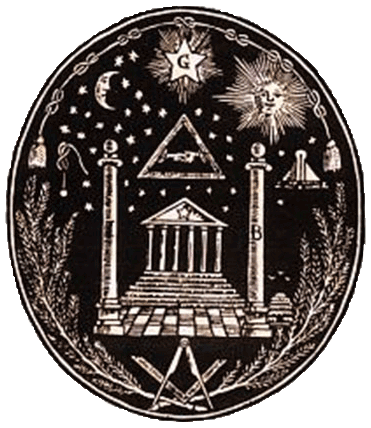 "to astonish, discover and teach".
In spite of numerous, more or less plausible attempts to decipher the Prince
message, as of yet no one has been able to convincingly explain its contents.
"to astonish, discover and teach".
In spite of numerous, more or less plausible attempts to decipher the Prince
message, as of yet no one has been able to convincingly explain its contents.
Related to this mysterious message, it must be mentioned that the Prince Masonic
experience was not among the most auspicious. Given his full immersion in esotericism,
it is not surprising that in 1750 when the Free Masons made their way to Naples,
don Raimondo decided to join them. Given the great amount of prestige he enjoyed,
it is not surprising again that his "brothers" would appoint him Grand Master
for the whole Kingdom. The nobility and bourgeoisie were truly captivated by
the occult and alchemic strand introduced by the Scottish Rites into the rationalistic
structure of the English Free Masons. The Prince was very able in exploiting
this widespread interest and soon he was able to create several lodges in Naples
alone, totaling about one thousand "brothers".
We must remember, though, that the Free Masons of those times were substantially
different from those of today. In the 18th Century, lodges took their name from
the taverns where the "Free Masons" would meet to discuss philosophy, esotericism
and politics. At the end of their discussion they would all sit around a table
and eat and drink to their heart's content. By the end of their wining and dining
they would put a close to the evening singing at the top of their lungs. Some
of their songs have made it to posterity. Here is one explaining why women should
be banned from the Free Masons:
"Do forgive us, Oh Love,
If Thy nymphs
We do not welcome among us,
Wherever Thy name resounds
Everything turns into fault and deception
Nor are cowardly women
Capable of keeping the brothers' secret".
But, nevertheless, because the Lodges spoke about equality and promoted free
thinking, the Holy Inquisition could not help but be concerned with their activities.
Coincidentally, at that time, the Holy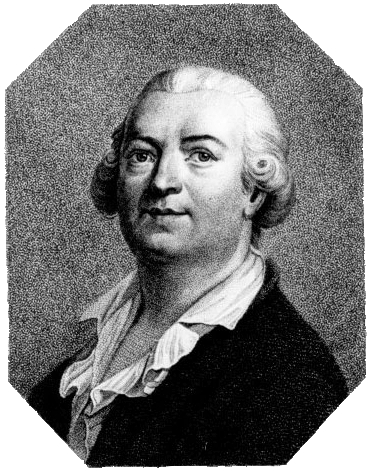 Inquisition (which was stronger in Spain) was looking to open a branch in the
Kingdom of the two Sicilies. The initiative was launched by Pope Benedict XIV,
who on January 15, 1751 informed the Ambassador of Charles III of Bourbon that
he was seriously concerned on account of the spread of Free Masonry in the Kingdom
and in the court itself. The Popès letter fell on eager ears as the King
himself had sought information on "this union that came about without the
King's knowledge and approval". Furthermore that year San Gennaro's blood
had failed to liquefy and the lower classes spurred on by a certain Father Pepe
had created a movement against the Free Masons who were seen as responsible
for the evil portent. (Editor's note: San Gennaro is Naples' patron Saint, and
it is widely believed that if the "miracle" of the liquefaction of
the saint's blood, which is contained in an ampoule in San Gennaro's Church
does not occur on the Saint's day it portends to ills befalling the city).
Inquisition (which was stronger in Spain) was looking to open a branch in the
Kingdom of the two Sicilies. The initiative was launched by Pope Benedict XIV,
who on January 15, 1751 informed the Ambassador of Charles III of Bourbon that
he was seriously concerned on account of the spread of Free Masonry in the Kingdom
and in the court itself. The Popès letter fell on eager ears as the King
himself had sought information on "this union that came about without the
King's knowledge and approval". Furthermore that year San Gennaro's blood
had failed to liquefy and the lower classes spurred on by a certain Father Pepe
had created a movement against the Free Masons who were seen as responsible
for the evil portent. (Editor's note: San Gennaro is Naples' patron Saint, and
it is widely believed that if the "miracle" of the liquefaction of
the saint's blood, which is contained in an ampoule in San Gennaro's Church
does not occur on the Saint's day it portends to ills befalling the city).
On May 28, 1751, Benedict XIV issued a Papal Bull "Providas Romanorum Pontificum",
by which he renewed the excommunication against the Free Masons, a sanction
that had already been applied thirteen years earlier by his predecessor Clement
XII. Obviously the one who stood in the cross hairs the most in this whole situation
was the Prince of San Severo. Having caught wind of the situation and trying
to cut losses, unbeknownst to the Pope, the Prince by December 26, 1750 had
turned in to the King a list of all the brothers in the Kingdom as well as all
documents related to the lodges. Charles III published an edict against the
Free Masons on July 2, 1751. On August 1, the Prince wrote the Pope a recantation
of his Masonic faith and placed himself under his protection. In so doing don
Raimondo betrayed the Masonic secret but saved his head, as well as that of
many others. In fact the King, who was not willing to send to prison half of
his Court limited himself to issuing a "solemn admonition" to all
Neapolitan Masons.
Scorned by the international "brotherhood" and by his own friends,
for twenty years the Prince went back to dabbling with alchemy, until death
befell him on the night of March 22, 1771 "for a sudden illness caused
by his mechanic experiments". During the long nights he spent in his laboratory
he had probably inhaled or ingested some toxic substance.
But there is one last mystery that Raimondo de Sangro took with him to his tomb.
In 1790, in front of a Roman tribunal of the Holy Inquisition, the Count of
Cagliostro claimed that all his knowledge of alchemy was taught to him many
years before in Naples by "a prince who had a great passion for chemistry".
The judges did not believe him and didn't give any weight to his words. Maybe
the name of that Prince was never spoken, but that we cannot know for certain
given that all transcripts from that trial were declared secret and to this
day are locked in the Vatican.
From Cagliostro's trial, which ended with the defendant being found guilty and
his internment in the fort of San Leo, near Rimini, we have only a brief synopsis
that the Holy Inquisition deemed appropriate for internal use. Who knows, if
only the Vatican chose to disclose the contents of these documents we may discover
that that evil genius of a Prince was indeed the teacher of the better known
Cagliostro. But that page of history is yet to be written.
© ALL REPRODUCTION RIGHTS RESERVED – Websites, blogs, social media, newspapers, magazines, tv or radio broadcasts, wishing to use the contents of this article for public distribution, MUST MENTION THE RINODISTEFANO.COM WEBSITE AS SOURCE.
My Books | My Articles | Events & News | Multimedia
Facebook | Twitter | YouTube | Instagram | Contact
© 2001-2024 Rino Di Stefano – Partial or total reproduction prohibited without permission
Copyright Statement – Privacy Policy
